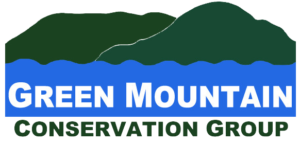About cyanobacteria and what to do if you see it
Cyanobacteria (formerly known as blue-green algae) are photosynthetic bacteria that naturally occur in most lakes, though often in relatively low numbers in New Hampshire. However, when provided with an overabundance of nutrients like phosphorus and nitrogen, combined with warm waters, cyanobacteria growth can proliferate into large numbers, knows as a “bloom”. Blooms are usually blue-green in color and consist of thousands of individual cells. When cyanobacteria appear in large numbers, this is a concern for public health, as cyanobacteria can produce a wide variety of toxins. Check this NHDES webpage see if there is a bloom near you: https://www4.des.state.nh.us/WaterShed_BeachMaps/
Cyanobacteria: Friend and Foe
The article by Jill Emerson that is linked here appeared in the Summer 2019 edition of GMCG’s newsletter.

“Cyanobacteria, or blue-green algae, blooms in a New Hampshire Lake.” Credit: New Hampshire Department of Environmental Services
If you see a bloom, you should:
1) Get out of the water, and rinse off thoroughly with soap and water. If your pet has been exposed, immediately notify your veterinarian.
2) If safe and easy to do so, take a picture of the bloom. Note the time and location as precisely as possible (name the nearest identifiable marker, such as street address or obvious feature).
3) Call your local state government (for NH, the number is (603) 848-8094) to report the bloom. Follow the directions listed in the voicemail if no one picks up.
4) If possible, post a sign notifying others of the bloom.
5) Alert neighbors and other commercial properties (like campgrounds) of the possible bloom and location.
6) Finally, please stay out of the water until the bloom has resolved and/or local government gives the OK to resume water activities. Keep pets out of the water as well, as exposure to cyanobacteria toxins tends to be lethal in dogs.
More information can be found at https://www.des.nh.gov/water/healthy-swimming/harmful-algal-blooms
Download a copy of the NHDES Cyanobacteria Fact Sheet: https://www.des.nh.gov/sites/g/files/ehbemt341/files/documents/2020-01/wmb-10.pdf
“Impact of Cyanobacteria on Danforth Pond & New Hampshire waterbodies”
Presentation by Amanda McQuaid on June 10, 2022 at the Freedom Town Hall hosted by the Friends of the Danforth Bays
Amanda McQuaid, Ph D. is the Director of the Lakes Lay Monitoring Program and a State Specialist in Water Quality and Ecotoxicology with the University of New Hampshire Cooperative Extension. She is the former Harmful Algal and Cyanobacterial Bloom Program Coordinator at NH DES. Cyanobacteria are a growing concern worldwide as the eutrophication of freshwater has accelerated the growth of potentially toxic blooms globally. New Hampshire lakes are also vulnerable to the growth of cyanobacteria blooms, so it is important to know what they are, what they look like, and what you can do to help reduce factors that facilitate their excessive growth. In this talk, we will discuss the ecology and toxicology of cyanobacteria in NH lakes, ways to monitor and be on the look out for surface scums, and the status/occurrence of such blooms in NH.

